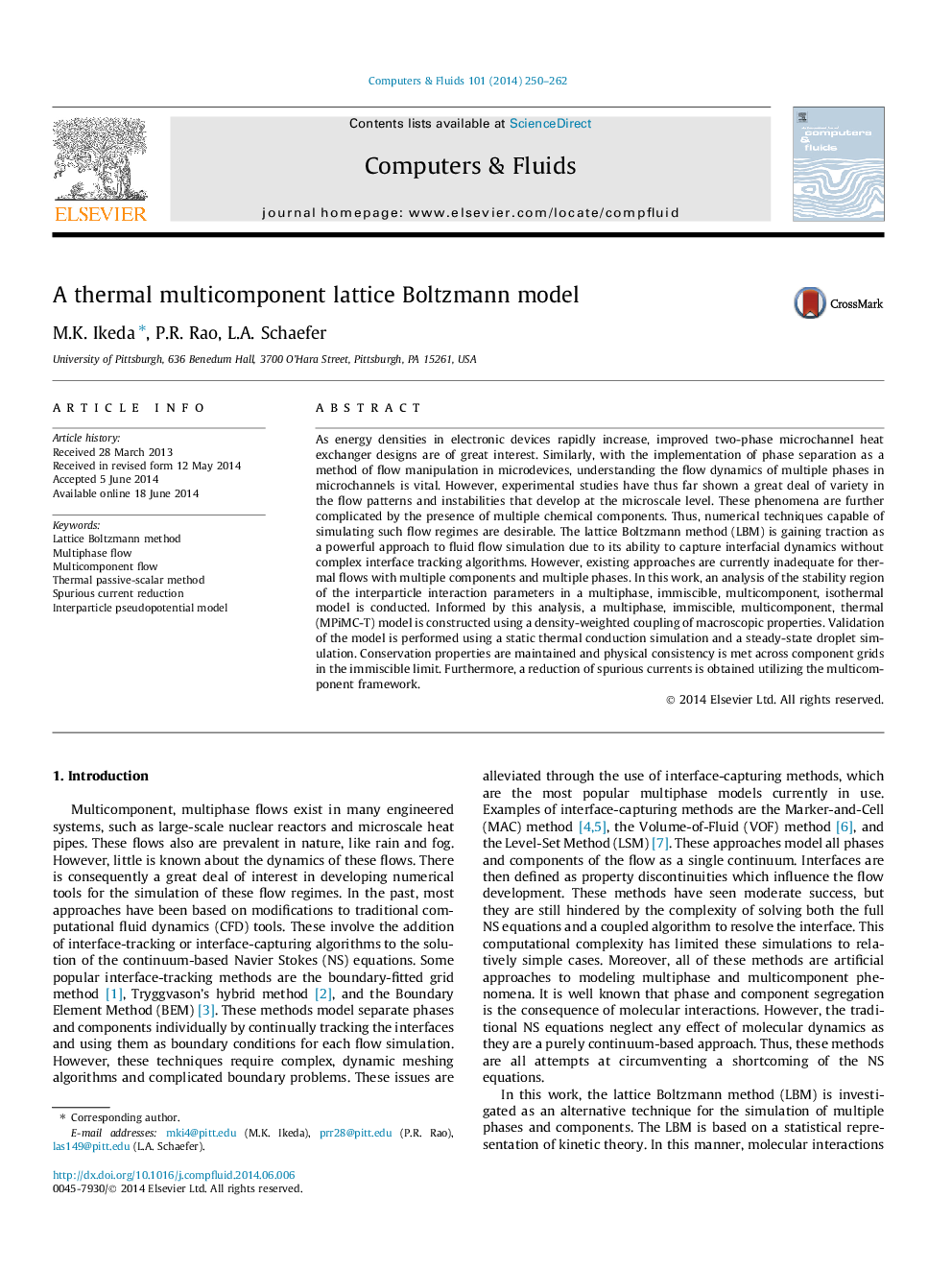| Article ID | Journal | Published Year | Pages | File Type |
|---|---|---|---|---|
| 768146 | Computers & Fluids | 2014 | 13 Pages |
•Stability region analysis of multiphase LB interparticle interaction parameters.•Construction of a multiphase, immiscible, multicomponent, thermal LB model.•Validation using static thermal conduction and steady-state droplet simulations.•Conservation properties and physical consistency maintained in immiscible limit.•A reduction of spurious currents is achieved for immiscible simulations.
As energy densities in electronic devices rapidly increase, improved two-phase microchannel heat exchanger designs are of great interest. Similarly, with the implementation of phase separation as a method of flow manipulation in microdevices, understanding the flow dynamics of multiple phases in microchannels is vital. However, experimental studies have thus far shown a great deal of variety in the flow patterns and instabilities that develop at the microscale level. These phenomena are further complicated by the presence of multiple chemical components. Thus, numerical techniques capable of simulating such flow regimes are desirable. The lattice Boltzmann method (LBM) is gaining traction as a powerful approach to fluid flow simulation due to its ability to capture interfacial dynamics without complex interface tracking algorithms. However, existing approaches are currently inadequate for thermal flows with multiple components and multiple phases. In this work, an analysis of the stability region of the interparticle interaction parameters in a multiphase, immiscible, multicomponent, isothermal model is conducted. Informed by this analysis, a multiphase, immiscible, multicomponent, thermal (MPiMC-T) model is constructed using a density-weighted coupling of macroscopic properties. Validation of the model is performed using a static thermal conduction simulation and a steady-state droplet simulation. Conservation properties are maintained and physical consistency is met across component grids in the immiscible limit. Furthermore, a reduction of spurious currents is obtained utilizing the multicomponent framework.
